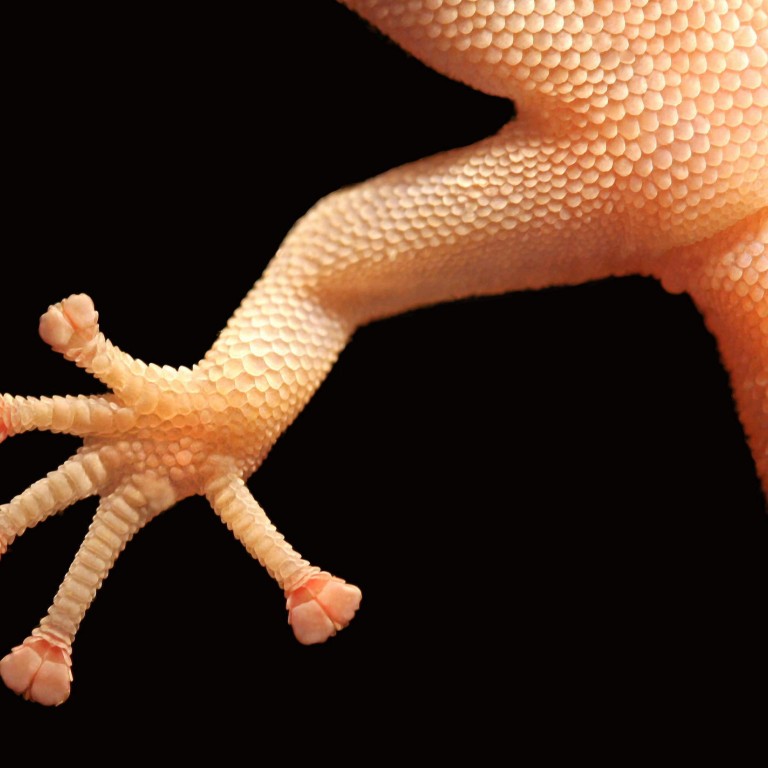
Gecko’s feet the inspiration for reusable Geckskin adhesive
A team of scientists at the University of Massachusetts in the United States has developed a new, reusable adhesive based on the feet of the gecko. Around 60 per cent of gecko species have adhesive toe pads and these pads were the inspiration for Geckskin - a device that can attach and detach from materials and surfaces repeatedly.
A team of scientists at the University of Massachusetts in the United States has developed a new, reusable adhesive based on the feet of the gecko.

Led by professors Al Crosby and Duncan Irschick, the team designed Geckskin for performance - you can suspend up to 320kg in weight from a glass-smooth vertical surface with a 10cm by 10cm patch.
It can be made from everyday items such as nylon, bathroom caulking, carbon fibre or cotton. Most things adhere to it and it adheres to most things.
Crosby and Irschick say it's not about making a new material but making old materials perform in new ways.
Geckskin is detachable and attachable. Its inventors stress its high weight capacity. Maths is what stops a TV you are hanging up from crashing down.
"Geckskin is built around three parts - pad, skin and tendon," Crosby said. "The way we configure the tendon and the skin allows us to design how it will be removed - so there will only be one mechanism or one twist that will take off the pad. Everything else would be stabilised.
"If you were to bump into that TV, it wouldn't come off unless you twist it purposefully in one way. It's very stable to things like accidental bumps or wind."
A key property of certain types of gecko is the ability to attach to any surface, release at will and be able to hold significant weight.
The team has worked on gecko-inspired adhesion for almost 12 years. "About five years ago, we started asking what allowed nature to scale adhesion," Crosby said. "Then we started developing the maths behind Geckskin." Some funding for the project came from Darpa, the advanced research arm of the US defence department, and the US National Science Foundation.
"In order to [otherwise] get the strength you get from Geckskin, you need to use epoxies and structural adhesives to bond two things together," Crosby said.
"You can't easily break those apart. With Geckskin, you get a strong bond but you can disassemble it. It eliminates adhesive waste but can also eliminate material waste."
Geckskin is different to other gecko-inspired adhesives, most of which tend to be nanotechnology and require complex manufacturing techniques. "We aren't creating a new material that requires some crazy nanotechnology and is going to cost millions to produce," Irschick said.
Crosby has a story of just how simple and everyday the process is. "I asked a PhD student to take some fabric and spread on a silicone elastomer," he said.
"This student went down to a local fabric store and bought a couple [of] yards of nylon, came back and coated it with silicone elastomer which you can find in bathroom caulking.
"That day we held up about a hundred pounds. The concept of coating elastomers on fabrics is an established manufacturing process. It's not new."
Geckskin is still being developed. Its creators have identified commercial uses but say it will take at least one year until its ready for the market.
